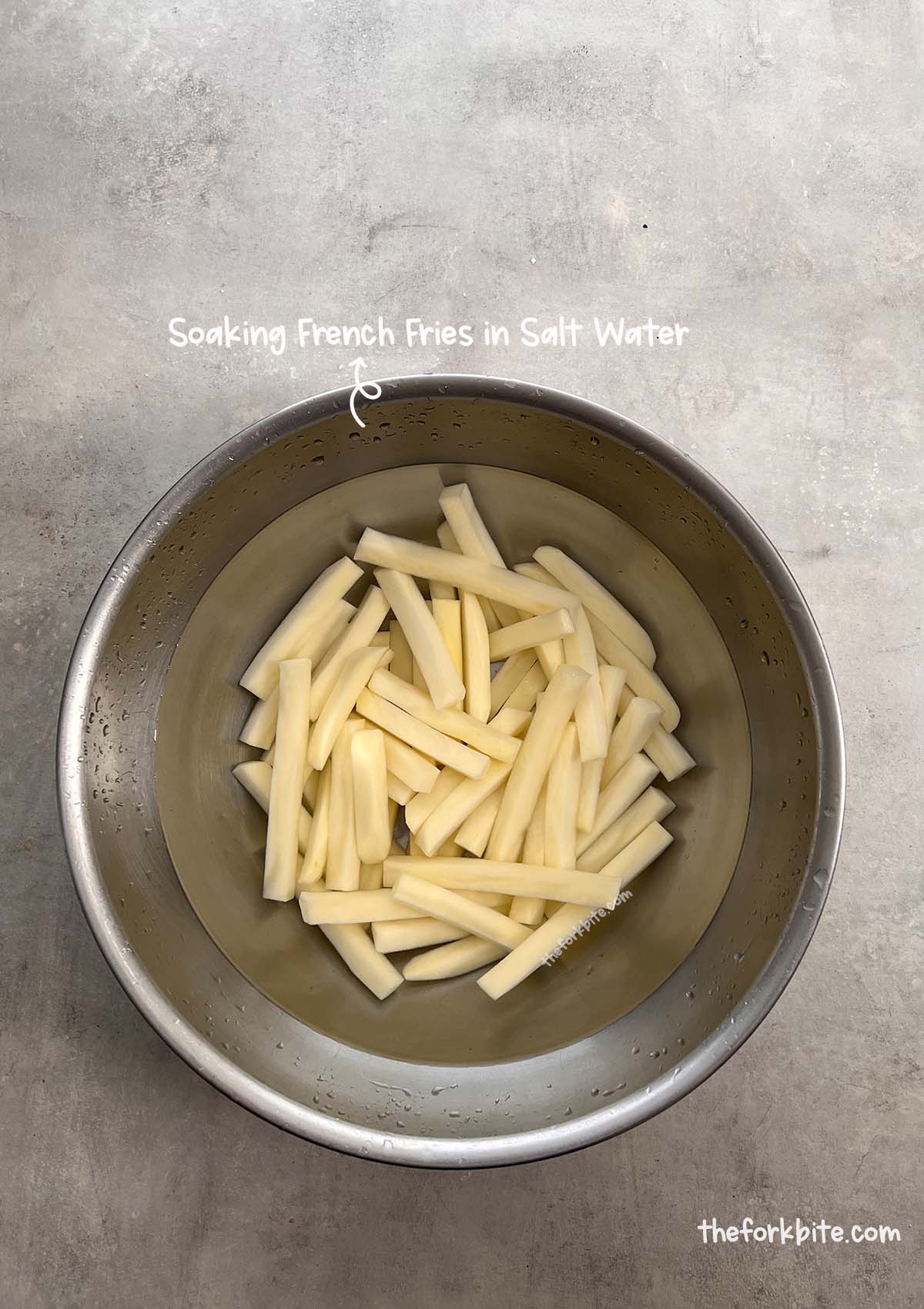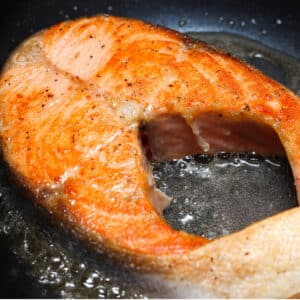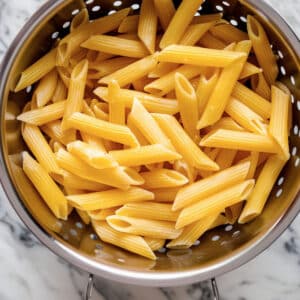Who doesn't love a good plate of french fries? Crispy on the outside and fluffy on the inside are undeniably delicious. It holds its shape upright and is not soggy, making it a favorite at home and in restaurants. To ensure that your french fries are as perfect as possible, you may have heard about the technique of soaking them in salt water before frying. But do we need to do this?
Some say that soaking french fries in salt water before frying makes them extra crispy and flavorful. Soaking the fries in salt water removes some of the starch, which makes them less greasy and unhealthy. Plus, they still taste just as good! This little trick can help your fries achieve the perfect level of salty deliciousness. Please keep reading to find out how it works!
Jump to:
So why should we soak french fries in salt water?
Soaking is a great way to make french fries that are extra crispy and flavorful. Soaking potatoes in salt water helps to draw out some of the starch, creating a firmer texture when they are fried, giving them a better crunch, and helping to prevent sogginess.
What is the science behind it?
When cut, potatoes release enzymes and starches that can create a gummy or soft texture. Soaking them in salt water prevents the enzymes from doing their job, preserving the potatoes' firm texture. The salt water also helps to season the fries, adding flavor throughout rather than just on the surface.
In addition to giving french fries extra crunch and flavor, soaking them in salt water is also a great way of prepping for frying. The salt water helps reduce the amount of oil absorbed into the potatoes during frying, making them healthier and less greasy.

What happens when you soak a potato in salt water?
1 It helps draw out moisture
Soaking the french fries in salt water can help draw out moisture from them. When the moisture is drawn out of the fries, they become less likely to absorb oil as they cook. As a result, the fry will be crispier when cooked. In other words, you can cook the fries a bit longer without becoming soggy or greasy.
How does salt water draw some moisture out of french fries?
French fries are composed mostly of carbohydrates, which contain high amounts of water molecules. When soaked in salt water, these molecules begin to bind to the salt molecules, drawing out some moisture from the fries. This process is called osmosis. This process leaves them with a crispier texture and flavor than if tossed into the hot oil.
Read:
2 Remove excess starch
Soaking the fries in salt water can also help remove excess starch. This makes the fries less likely to stick together, resulting in a more evenly-cooked fry.
Why is it essential to remove some of the starch from french fries?
Starch tends to make french fries stick together when cooked. Why is that? When starch molecules absorb water and swell, they form a gel-like substance that binds food particles together. The fries will become soggy and clumpy without removing some starch beforehand.
To get the best results, you should soak your french fries in salt water for at least 30 minutes before cooking them. Soaking french fries in salt water helps to draw out some of the starch, allowing them to cook more evenly and become crispier. Salt water also helps enhance the flavor of french fries, adding a hint of saltiness that complements the potatoes.
3 Enhance the flavor
Salt can be a flavor enhancer for french fries by bringing out the potatoes' natural sweetness. The salt helps draw out the potatoes' sugars, making them more flavorful. As a bonus, salt water can also act as a flavor enhancer and improve the overall flavor of the fries.
Additionally, salt helps to reduce bitterness and adds depth and complexity of flavors to the dish. Ultimately, the salt enhances the overall taste of the fries and makes them more enjoyable to eat.
4 Reduce oil absorption
Not only can soaking french fries in salt water improve their flavor, but it can also help reduce oil absorption and increase their cooking time.
How does it work?
When you soak French fries in salt water before cooking, the osmotic pressure of the saltwater draws moisture out of the fries and helps to reduce their oil absorption. The reason is that the salt water creates an environment where the moisture from the fries is drawn out, making it more difficult for the oil to penetrate. Additionally, when the fries are cooked in hot oil, having less moisture inside them results in faster cooking and a crispier outside.
5 Reduce oil splatter
Additionally, soaking french fries in salt water also helps reduce the splatter created when frying, making a cleaner and more efficient cooking experience.
How does it work?
Saltwater has a relatively high boiling point compared to plain water, so the fries will start cooking more gradually. This means that steam won't build up as quickly, reducing the hot oil thrown out of the pan.
Read:
How to soak french fries in salt water:
Step 1
Fill a container with cold water. When soaking potatoes for french fries, use cold water, salt, and lemon juice (or white vinegar) for the acidity.
Step 2
Add salt to the water, about one tablespoon for every gallon. The amount of salt can vary depending on how salty you like your fries. You may need to adjust the amount of salt you use based on your preference. Add 1 tablespoon of lemon juice to prevent oxidation.
Step 3
Add peeled and cut potatoes to the water after mixing in salt and lemon juice. Let them sit in the salted water for at least 30 minutes but no longer than 4 hours. Your fries should have the perfect texture after this.
Step 4
After the potatoes have soaked, rinse them thoroughly until the water runs clear. Drain the water and dry the potatoes with a kitchen or paper towel before frying.
Note: Soaking french fries in salt water isn't necessary, but it can help to give your potatoes that extra flavor and prevent them from becoming too soggy when cooked. This can be one of the best ways to take your french fries from good to great if you have the time!
What is the difference between soaked and un-soaked french fries?
It is a question that has long stumped fast food fanatics: should french fries be soaked before cooking?
French fries can be either soaked or un-soaked. As mentioned earlier, soaking french fries helps to remove excess starch, resulting in a crispier fry. Un-soaked french fries tend to be softer and have more of a starchy flavor.
When it comes to taste, soaked and un-soaked french fries have distinct flavors. Soaked french fries are savory, while un-soaked fries have a sweeter taste.
There is no right or wrong answer – it depends on what you like best. Ultimately, it comes down to preference. Some people prefer the crispy texture of soaked french fries, while others prefer the softer, starchy texture of un-soaked ones.
How to make perfect fries?
Cooking decent enough french fries is simple, even for beginners. It takes enormous synergy to make a perfect fry: a long, thin slice of airy goodness laced with salt crystals, crisp on the outside and tender on the inside.
Aside from soaking freshly-cut fries in salt water, there's another method to make the perfect french fries: blanching.
What's the reason for blanching freshly cut fries?
Blanching can accomplish a lot when trying to cook some fresh french fries. When french fry strips are blanched in oil and allowed to set for a minimum of 30 minutes before finishing frying, blanching offers the following benefits:
1 The color is more uniform.
Why is blanching makes the fries' color uniform? The pre-frying blanching process helps remove some sugar content from the potatoes, preventing too much caramelization during frying. This ensures that the fry strips will have a consistent color.
2 Increased crispiness.
Blanching also helps to create a crispier French fry. The blanching process softens the potatoes' starches and helps remove some of their moisture content. As a result, after frying the potato strips, they can achieve maximum crispiness.
3 Improved texture.
The blanching process helps to give the fries a more tender and fluffier texture. It's because blanching helps to create a "gelatinized" coating on the potato strips. This coating helps to prevent oil absorption during frying, which in turn helps to create a more tender and fluffier texture.
4 Reduced oil absorption.
Blanching reduces the amount of oil absorbed by potatoes during frying. Pre-frying blanching helps to reduce fat absorption when the surface layer of starch has a chance to gelatinize, which prevents the fries from soaking up too much oil during frying.
The gelatinization of the surface layer of starch occurs when it is exposed to a high heat source. This causes the starches on the surface of the potato strips to swell and form a protective layer that prevents oil absorption during frying.
5 Reduced frying time.
Preparing french fries by blanching before frying also reduces the time it takes to finish frying them. This is because the potato is already partially cooked before placing in the fryer. Blanching can help achieve a delicious and consistent batch of french fries. <source here>.
So which one is better: Soaking in salt water or blanching?
The debate between the two methods is ongoing. It is advisable to blanch, however, depending on your preference for crispness and texture. Blanching helps eliminate excess starch, which can cause french fries to become soggy and greasy when fried. It also helps to evenly cook the potatoes, allowing for a more consistent texture across the fries.
Soaking in salt water, however, can help bring out the potatoes' flavor and add a level of seasoning not easily achieved through blanching. The best method for you depends on the type of french fries you're looking to create.
Overall, from my experience, you can achieve the perfect french fries every time with the combination of blanching and saltwater soaking!
How to achieve that crispy outer layer on your french fries
The key to making the perfect french fry is all in the crispy outer layer. Achieving this delicate balance of crunch and flavor is no easy feat, but there are a few tricks of the trade that any home cook can learn.
1 The first step is to choose the right type of potato.
You can fry any potato, but only a few varieties fry up nicely. It has to do with solids and starch contents. Potatoes with a higher content of both will fry up better than those with lower amounts.
One factor in the success of your french fries is the type of potato you use. Russets are usually preferred since they have a mealy texture, making them fluffy on the inside and crispy on the outside. They are the most popular choice as they simultaneously fry up crispy and fluffy. Why choose Idaho potatoes? Ask for it by name or by state, such as Idaho potatoes. Idaho is known for producing the best potatoes and all potato products.
Another option is to use older potatoes.
Why is that? While the potato is fresh, it will have a high water content. As it ages, water content reduces, and the potato becomes starchier. This allows for a crispier fry that is less likely to become soggy. So, if you have them available, try using older potatoes for a better fry.
Note: Once you have the spuds, the procedure, while a bit arduous, is easy to follow. There are a couple of key things you're looking to accomplish to get the best product, and the first is to eliminate as much excess starch as possible. Removing the starch reduces the chances that the fries will stick together and gives a crisper fry.
2 The soaking process is the next step
When the potatoes are cut into strips and put in a bowl of cold water with salt, they absorb some of the liquid, making them firmer and less likely to be soggy. It also helps to keep the potatoes from sticking together when frying. The amount of time for soaking depends on the size of the potato strips. The larger the strips, the longer they should soak. Check the steps above on soaking freshly cut potatoes in salt water.
3 The importance of double frying cannot be overstated.
The first process, "blanching," requires low heat and rest. Blanching cooks the potatoes and softens them so that when you fry them, they'll cook evenly and create those beautiful, crispy edges.
The second fry is the crucial step that brings out all the flavor and creates evenly-browned fries. Once you blanch the potatoes, you'll need to heat the oil again and fry them for a second time. The result will be golden-brown and crispy french fries that are full of flavor.
And remember that double frying will help your french fries hold their shape and not become soggy. So, if you want your french fries to turn out perfectly each time, double-frying is the way to go. Enjoy!
How to blanch french fries:
Step 1
Prepare the potatoes by washing and peeling them. You can leave the peels if you want a more rustic look. Cut the potatoes into evenly-sized strips of desired thickness for uniform cooking.
Step 2
Fill a large bowl of cold water and add 1 tablespoon salt and lemon juice. Place the cut potato strips and let the fries soak for 15 to 30 minutes. Doing this removes excess starch that can make the fries soggy. You can stick the bowl in the fridge to keep the potatoes cold while they soak.
Step 3
Remove the potato strips from the water. You'll notice the cloudiness and starch. Rinse the potatoes under cold running water to remove any excess starch. If the water is still cloudy, you can keep rinsing until it runs clear. Handle carefully, as the potatoes will be fragile.
Step 4
Lay the fries in a dry kitchen towel and pat down to remove any excess moisture. Allowing the fries to sit longer on a dry surface enables them to dry out thoroughly, producing a crisper fry.
Step 5
Heat oil in a deep fryer or skillet to 300°F (150°C). Working in batches, carefully add the potato strips to the hot oil. Fry for 3-5 minutes until they are limp and lightly golden. Don't let the fries brown at this stage, as they will cook more in the next step.
Step 6
Carefully remove the fries from the oil and set them aside on a plate lined with paper towels to drain the excess oil. Let them rest to come to room temperature. This allows them to cool and become firmer before frying them again.
Why do you need to let the fries come to room temperature before the second frying? If you try to fry the potatoes again while they are still hot, there won't be enough time to dry out and become crispy. So make sure to let them rest for at least 20 minutes or up to an hour.
Step 7
Once the fries have cooled, fry them again, this time at a higher temperature (about 350°F) for about 3 minutes or until crisp and golden brown. Use half-full baskets in the fryer to prevent overcrowding. Give the basket a shake halfway through the frying process to help redistribute the fries in the oil. Frying without shaking will result in the outer fries overcooking and the inner fries undercooking.
Step 8
Once your french fries have reached a golden brown, remove them from the fryer and drain them on paper towels to remove excess oil. Sprinkle lightly with salt, pepper, or other seasonings of your choice. Serve hot, and enjoy the perfect french fries with your favorite dipping sauce!
This double-frying technique ensures even cooking inside and out, resulting in a delicious plate of crunchy, fluffy fries.
References:




